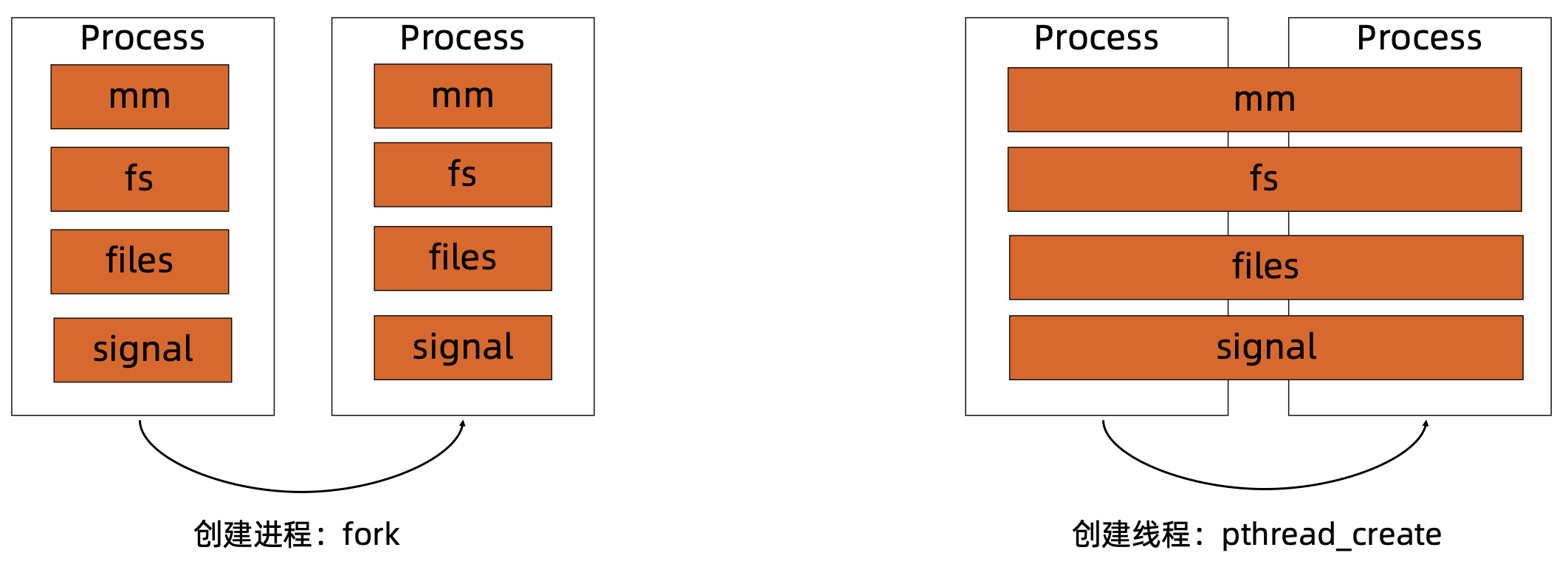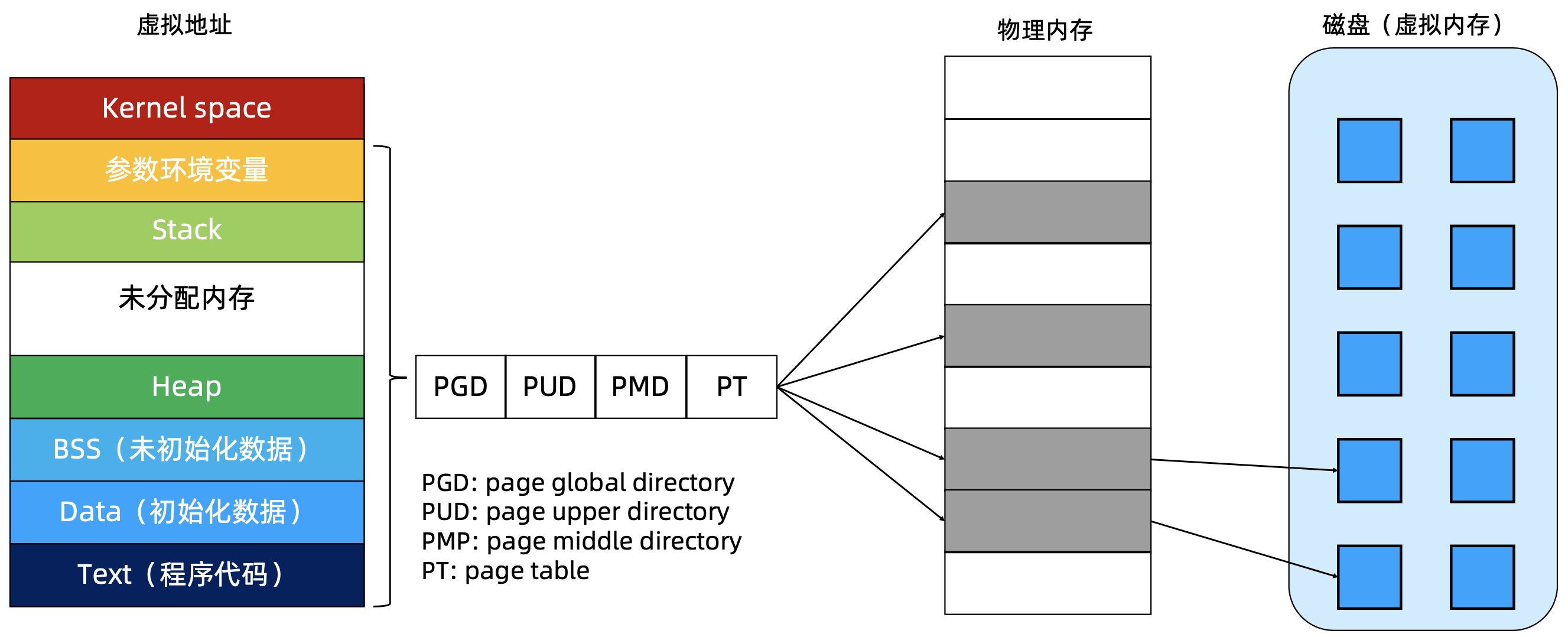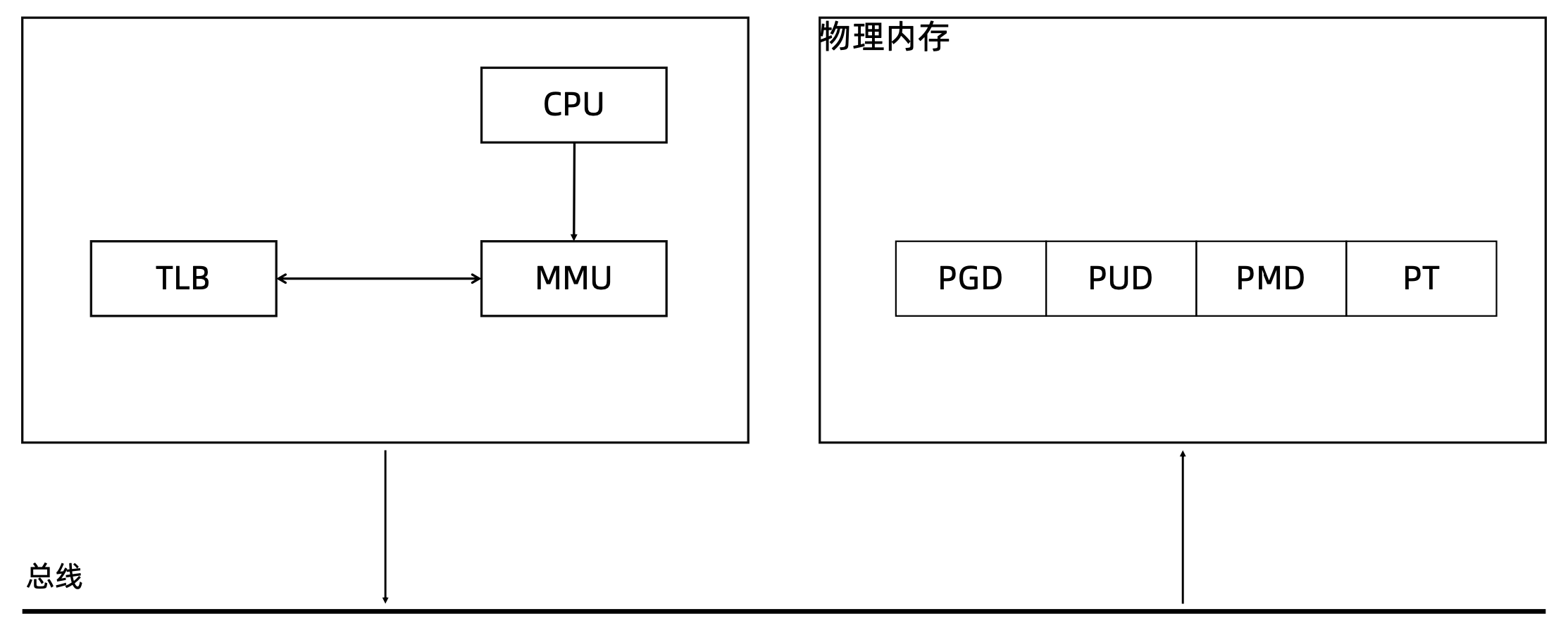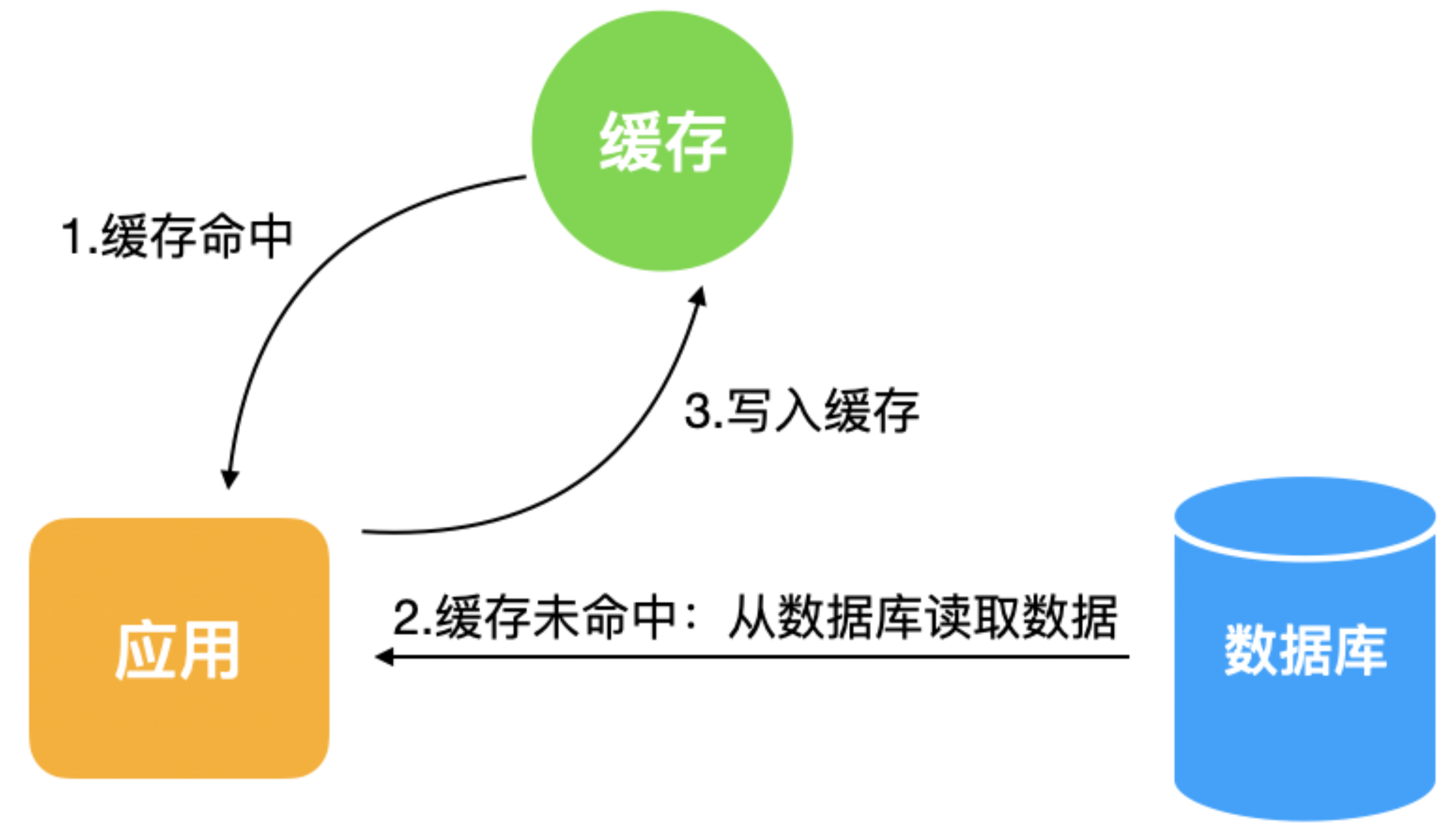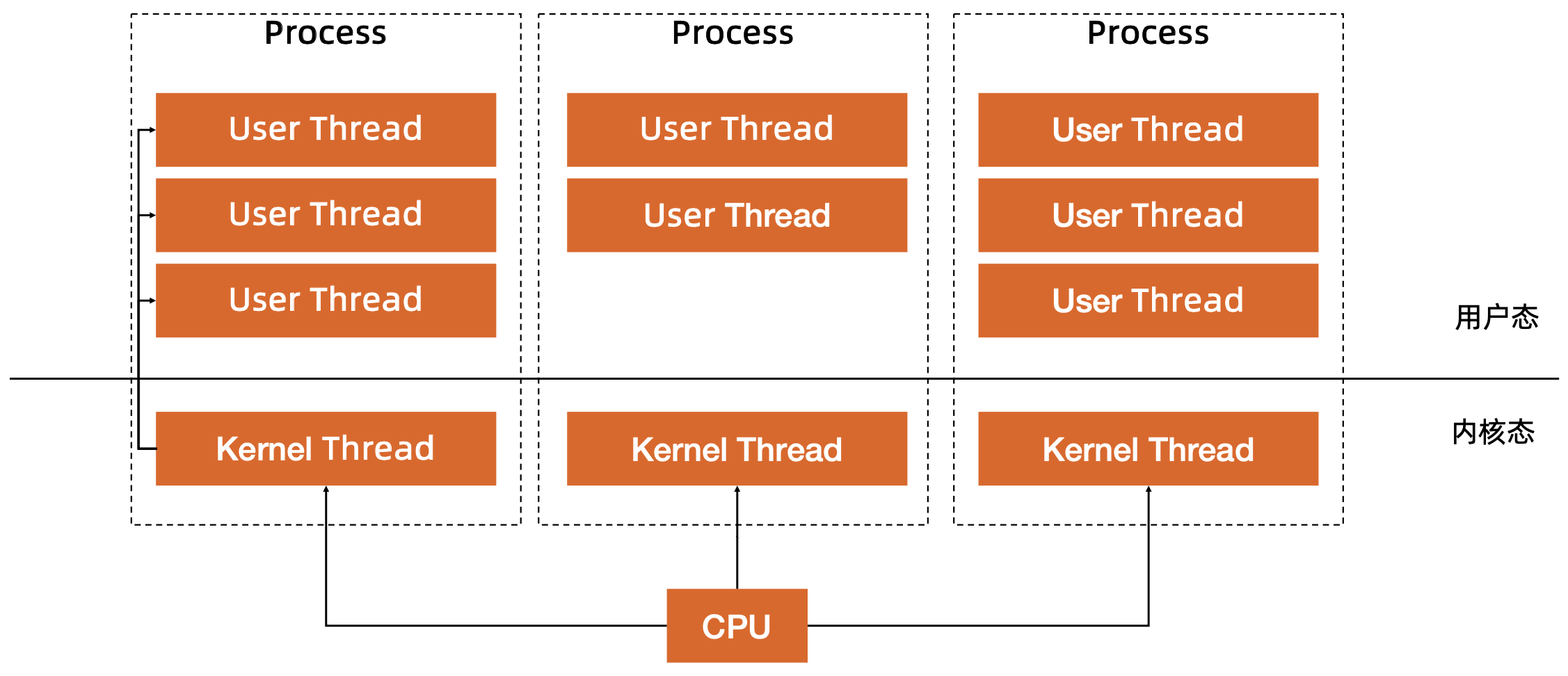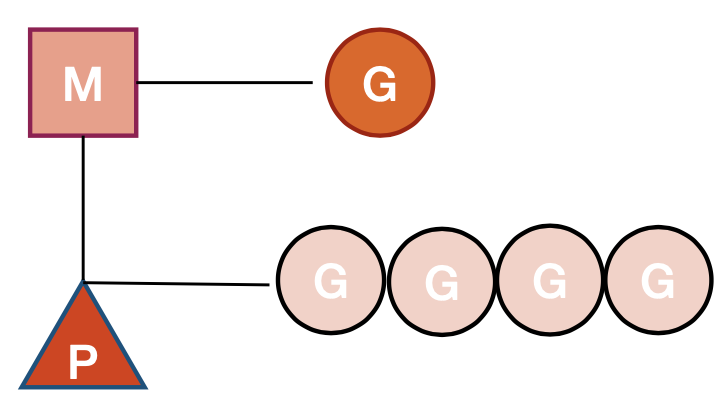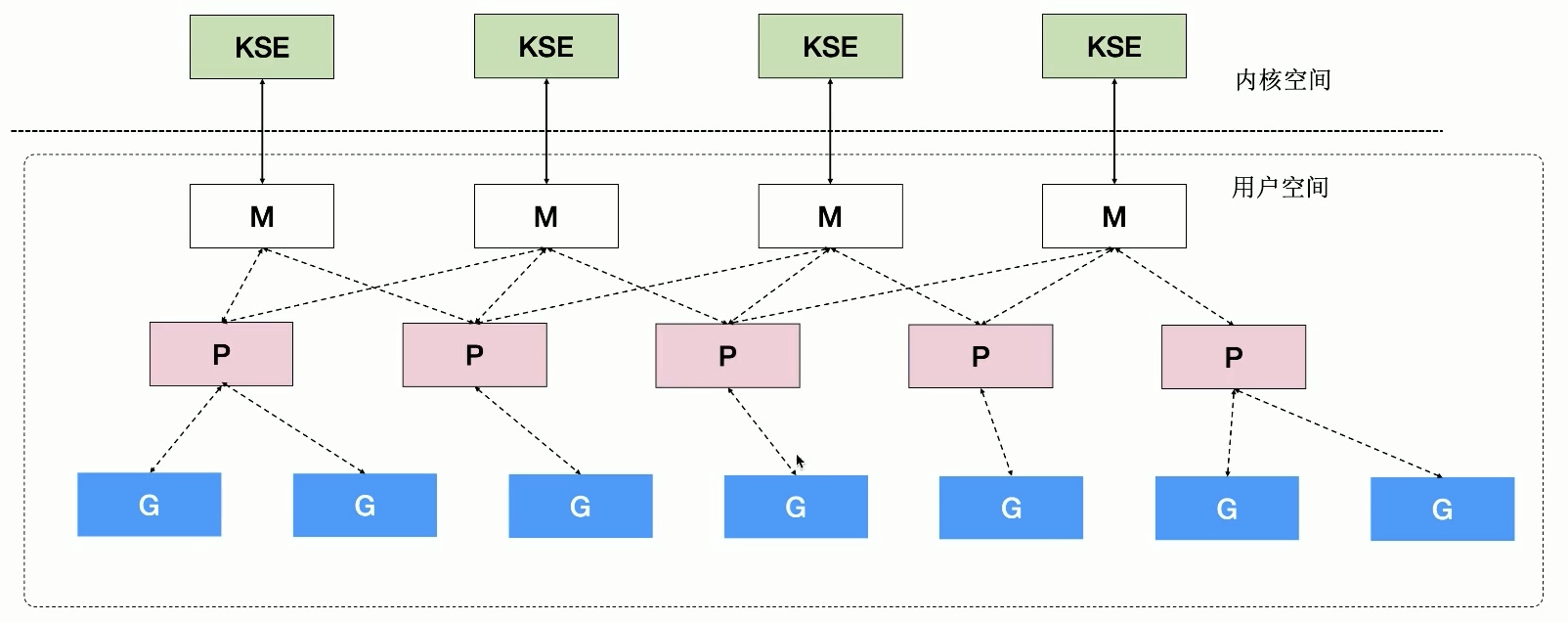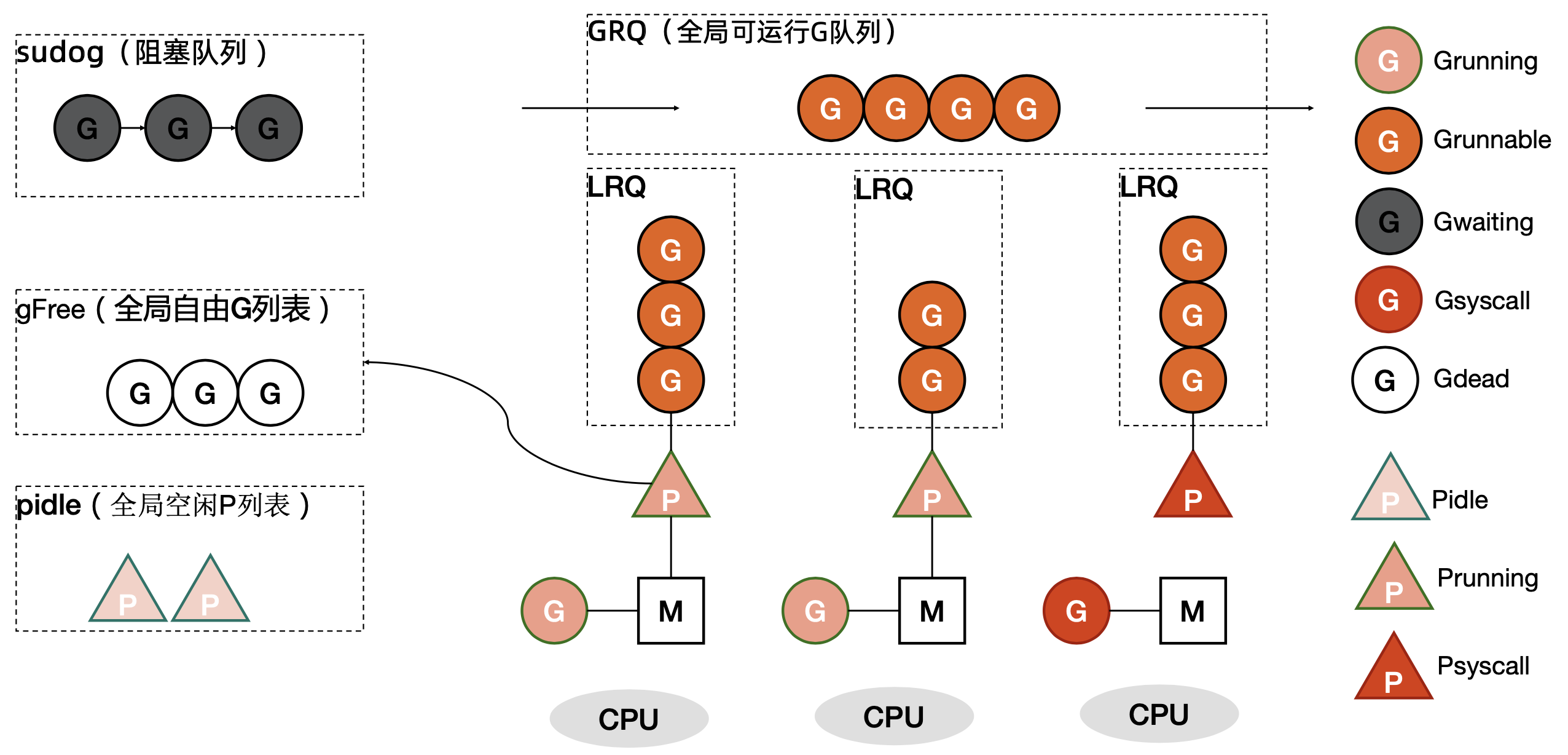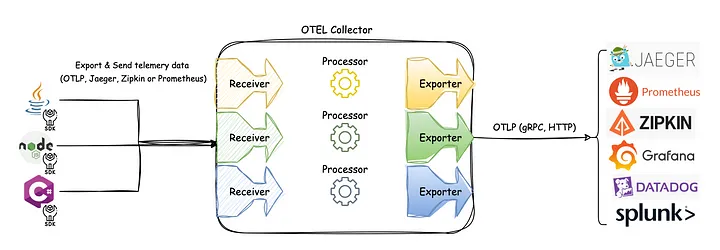Cloud Native Foundation - Go Thread Scheduling
进程 & 线程
- 进程:资源分配的基本单位
- 线程:调度的基本单位
- 在内核视角,线程与进程无本质差别,在 Linux 中都是以**
task_struct**进行描述- glibc 中的 pthread 库提供了
Native POSIX Thread Library支持 - Native POSIX Thread Library (NPTL)
- is an implementation of the POSIX Threads specification for the Linux operating system.
- glibc 中的 pthread 库提供了
- 子进程通过
fork的方式产生,基于父子关系形成进程树,Linux 中的初始进程一般为systemd
1 | $ pmap 1 |
Linux 进程内存
虚拟地址
https://ggirjau.com/text-data-bss-heap-stack-and-where-in-memory-are-stored-variables-of-c-program/
| Segment | Desc |
|---|---|
| .text | contains executable instructions |
| .data | contains any global or static variables which have a pre-defined value and can be modified |
| The values for these variables are initially stored within the read-only memory (typically within .text) and are copied into the .data segment during the start-up routine of the program | |
| .bss | Named after an ancient assembler operator that stood for “block started by symbol” |
| Data in this segment is initialized by the kernel to arithmetic 0 before the program starts executing | |
| Uninitialized data starts at the end of the data segment and contains all global variables and static variables that are initialized to zero or do not have explicit initialization in source code. | |
| Heap | Heap is the segment where dynamic memory allocation usually takes place. |
| The heap area begins at the end of the BSS segment and grows to larger addresses from there. | |
| The Heap area is shared by all shared libraries and dynamically loaded modules in a process. | |
| Stack | The stack area contains the program stack, a LIFO structure, typically located in the higher parts of memory. |
| A “stack pointer“ register tracks the top of the stack; it is adjusted each time a value is “pushed” onto the stack. | |
| The set of values pushed for one function call is termed a “stack frame“. A stack frame consists at minimum of a return address. Automatic variables are also allocated on the stack. 方法中的本地变量会分配到栈上 |
|
| The stack area traditionally adjoined the heap area and they grew towards each other; when the stack pointer met the heap pointer, free memory was exhausted. | |
| On the standard PC x86 architecture the stack grows toward address zero, meaning that more recent items, deeper in the call chain, are at numerically lower addresses and closer to the heap. |
1 | int debug_sesion = 1; |
1 | static int i; |
Go 样例
Go 不支持静态变量,Go 代码本身编译后在 .data 和 .bss 没有值(里面实际存储的是 Go Runtime 的值)
1 | package main |
1 | $ go build main.go |
多级页表
- 页表的作用:虚拟地址与物理地址的映射关系
- 单级页表相当于一一映射,本身就非常浪费内存,为了节省内存,发展出了多级页表(常见为4级)
- 寻址:多级索引 + 页内偏移
1 | $ getconf PAGE_SIZE |
CPU 访问内存
- MMU: Memory Management Unit
- TLB: Translation Lookaside Buffer,用于缓存虚拟地址和物理地址的映射关系
- TLB 在 CPU 内部,比 L1 Cache 都要快
- 注意区分 JVM 中的 TLAB(Thread Local Allocation Buffer)
- 过程(缓存模式:Cache-Aside)
- 第一次访问,CPU 把虚拟地址交给 MMU,MMU 去物理内存中查找多级页表,得到实际的物理地址
- 然后将虚拟地址与物理地址的映射关系缓存到 TLB
- 对于同一个虚拟地址的后续访问,将直接访问 TLB
切换开销
| 内核参与(系统调用) | 虚拟地址空间切换 | |
|---|---|---|
| 进程 | Y | Y |
| 线程 | Y | N |
| 用户线程 - goroutine | N | N |
进程
- 直接开销
- 切换 PGD
- 刷新 TLB
- 切换硬件上下文(即:进程恢复前,必须装入寄存器的数据)
- 切换内核态堆栈
- 系统调度器的代码执行
- 间接开销
- 新切入的进程,由于 CPU 缓存失效,导致该进程直接访问内存的操作变多
线程
- 线程本质上只是一批共享资源的进程,线程切换本质上依然需要内核(系统调用)进行进程切换
- 共享 => 节省
- 进程内的所有线程共享虚拟地址空间 – 即mm,线程切换相比进程切换,主要节省了虚拟地址空间的切换,开销小很多
用户线程
应用程序在用户空间创建的可执行单元(goroutine),创建销毁完全在用户态完成,无需切换,无需内核参与(系统调用)
GMP 模型
Go 基于 GMP 模型实现用户态线程
概要
| Component | Desc |
|---|---|
| G : Goroutine | goroutine 每个 goroutine 都有自己的栈空间和和定时器,初始化的栈空间在 2K 左右,后续可能增长 |
| M : Machine | 抽象化代表内核线程,记录内核线程栈信息 当 goroutine 调度到线程时,使用该 goroutine 自身的栈信息 任何运行中的 goroutine 会与某个内核态的线程绑定 |
| P : Processor | 代表调度器,负责调度 goroutine 维护一个本地 goroutine 队列,M 从 P 上获取 goroutine 并执行,同时还负责部分内存的管理 |
KSE: Kernel Scheduling Entity – 轻量级进程
细节
P 状态
| State | Desc |
|---|---|
| _Pidle | 没有运行用户代码或者调度逻辑,执行队列为空 |
| _Prunning | 被 M 持有,并且正在执行用户代码或者调度逻辑 |
| _Psyscall | 没有执行用户代码,当前线程陷入系统调用 |
| _Pgcstop | 被 M 持有,当前 P 由于 GC 被停止 |
| _Pdead | 不再被使用 |
G 状态
| State | Desc |
|---|---|
| _Gidle | 刚被分配还未初始化,值为0,为创建 goroutine 后的默认值 |
| _Grunnable | 没有执行代码,没有栈的所有权,存储在执行队列中(LRQ 或者 GRQ) |
| _Grunning | 正在执行代码,拥有栈的所有权 |
| _Gsyscall | 正在执行系统调用,拥有栈的所有权,与 P 脱离,与 M 绑定 系统调用结束后会被分配到执行队列 |
| _Gwaiting | 被阻塞的 goroutine,阻塞在某个 channel 的发送或者接收队列 |
| _Gdead | 当前 goroutine 未被使用,没有执行代码,分布在 gFree 1. 可能是一个刚初始化的 goroutine 2. 也可能是刚执行完的 goroutine |
| _Gcopystac | 栈正在被拷贝,没有执行代码,不在执行队列上,执行权在 |
| _Gscan | GC 正在扫描栈空间,没有执行代码,可以与其他状态同时存在 |
G 位置
- 进程都有一个全局的 G 队列
- 每个 P 拥有一个本地执行队列 LRQ
- 不在执行队列(LRQ 或者 GRQ)中的 G
- 处于 channel 阻塞态的 G 被放在 sudog
- 脱离 P 绑定在 M 上的 G,例如系统调用
- 为了复用,执行结束后进入 P 的 gFree 列表中的 G
创建 G
- 创建过程
- 从 P 的 gFree 列表中查找空闲的 goroutine
- 如果不存在空闲的 goroutine,会创建一个栈大小足够的新结构体
- 将函数传入的参数移到 goroutine 的栈上
- 更新 goroutine 调度相关的属性,更新状态为 _Grunnable
- 返回的 goroutine 会存储到全局变量 allgs 中
G -> Q
- 首先尝试将 G 放入对应的 LRQ
- 如果 LRQ 已经满了(256),会把 LRQ 中的一部分 G 和待加入的 G 一起放到 GRQ
P
- 为了保证公平,当 GRQ 中有 G,首先以一定的概率(1/61)尝试从 GRQ 中获取 G,获取失败再尝试从 LRQ 中获取
- 如果还是失败,则随机从其他 P 对应的 LRQ 中获取 G
M & P
- 默认情况下,P 的数量 = CPU 个数,可以通过
GOMAXPROCS修改,上限为256 - M 的数量为内核线程数量,M > P,上限为10,000
- P 的数量在调度器初始化的 procresize 中控制
- 当调度器进行调度,唤醒 P 的时候,会尝试获取 idle m,如果获取不到,则创建新的 M(内核线程)
- 因为 M 可能陷入系统调用,而系统调用可能是阻塞的,如 IO,此时 CPU 是空闲的
- 创建新的 M 与 P 关联,可以让更多的 G 被调度,充分利用 CPU
All articles on this blog are licensed under CC BY-NC-SA 4.0 unless otherwise stated.

